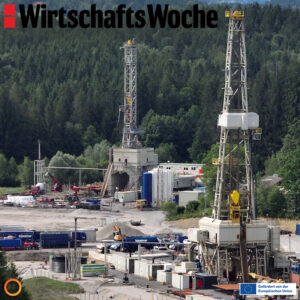Described as an under utilized yet nearly endless source of clean baseload energy, the WirtschaftsWoche’s article written by Stefan Hajek describes Eavor’s closed-loop system as the means to break away from niche technology that’s only been used in minimal regions.
The article sets the scene at the Geretsried drilling site. Following Fabricio Cesário, project manager of the construction site, insights are given into the intense labour that goes into drilling more than 4500 meters deep into the foothills of the Alps. Penetrating limestone rock, 280 kilometres of horizontal wellbores are connected together to form a massive subsurface heating system. With drilling beginning in August, the two vertical wells could potentially be connected as early as November.
“… the process has the potential to help geothermal energy make a further breakthrough after decades as a niche technology,” said André Deinhardt, head of the Federal Association of Geothermal Energy.
According to the article, 56 percent of total German energy consumption is directed towards heating, which is more than transport and electricity combined. 774 TWh of the total 1300 TWh that Germany consumes annually is used to heat homes, and the rest is consumed by industry. A majority of this heat is currently being supplied by fossil fuels, which, in previous years, had been supplied by Russia.
Rolf Bracke, Professor of Geothermal Energy Systems at the University of Bochum, stated that this energy has the potential to be a “source of independence” that would eliminate Germany’s dependence on Russian natural gas. Since Eavor’s Geoenergy technology is baseload, it can provide electricity and district heating whenever it’s needed, which is especially in high demand during the winter months.
In the context of Germany’s struggle to overcome decarbonization challenges, Hajek wrote: “Deep geothermal energy has so far only been used on two percent of the country’s landmass, mainly in and around Munich and on the Upper Rhine. There are only 40 deep geothermal plants in Germany, with a heat output of 427 megawatts, they supply only 1.7 TWh of energy per year – a tiny fraction of the heat requirement. It would have to be a lot more.”



















